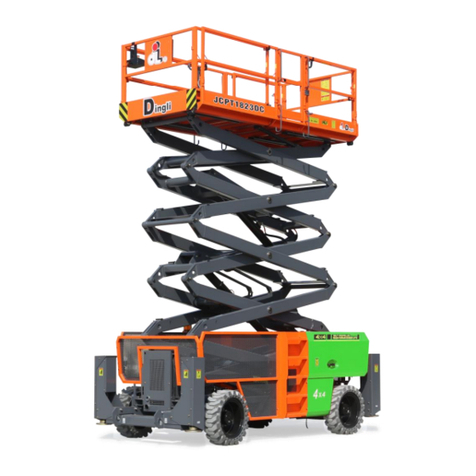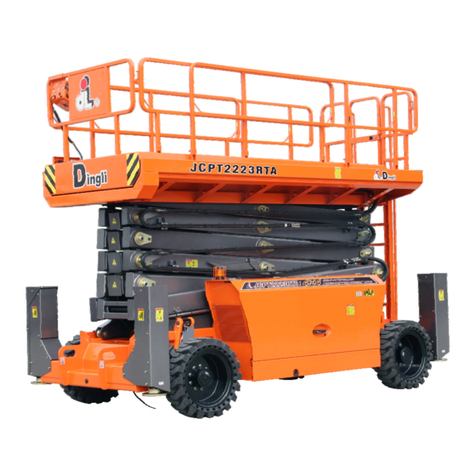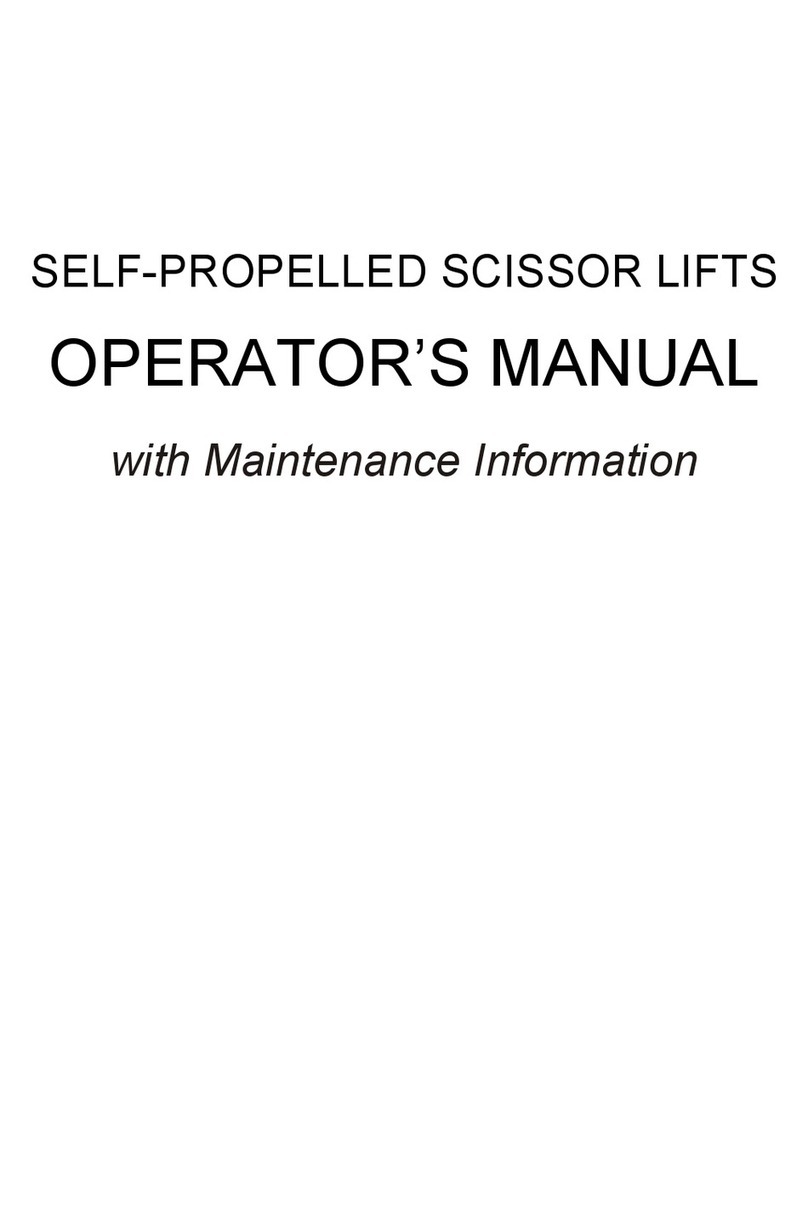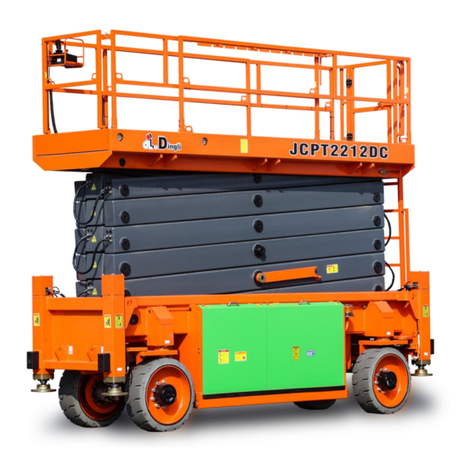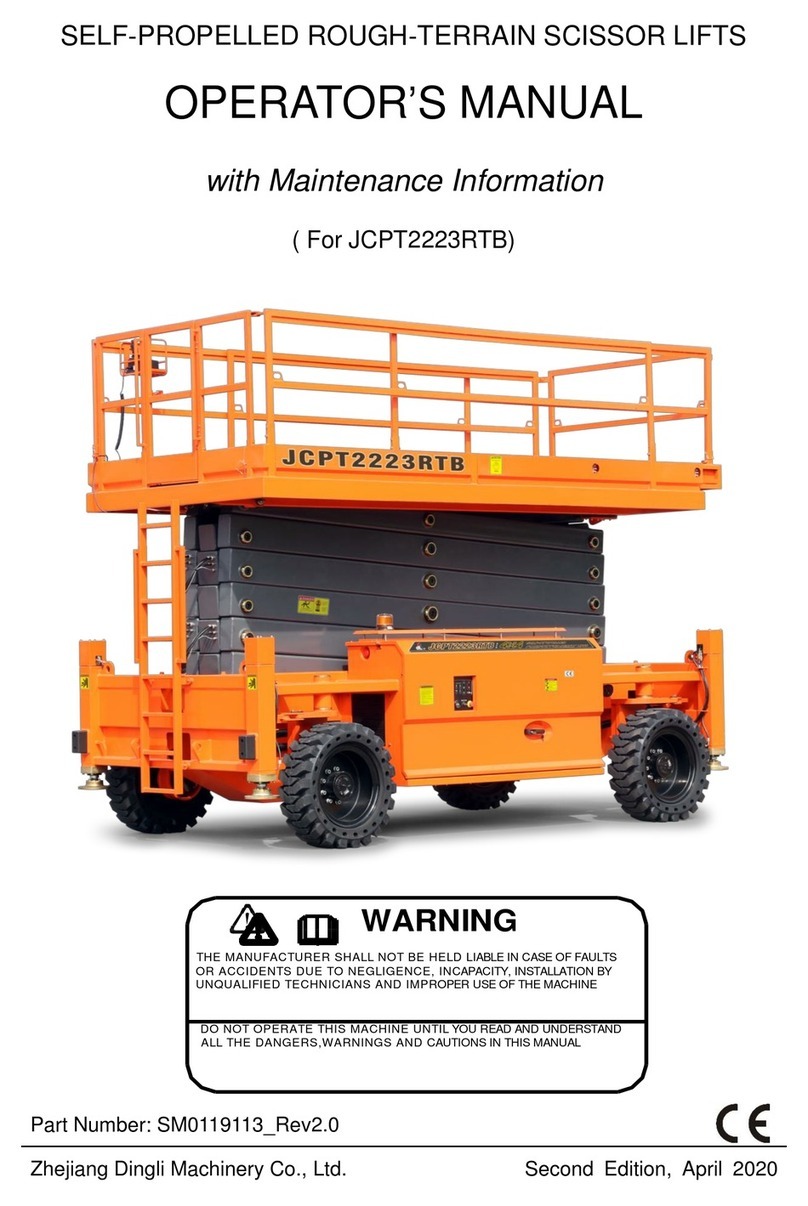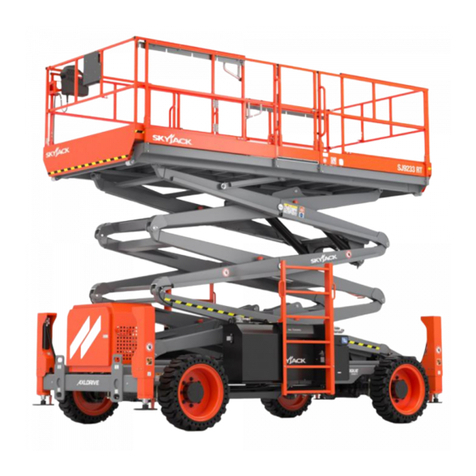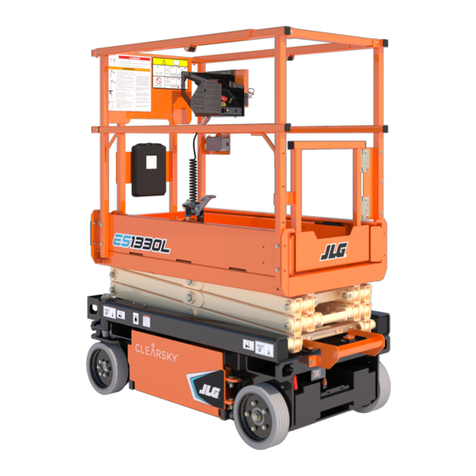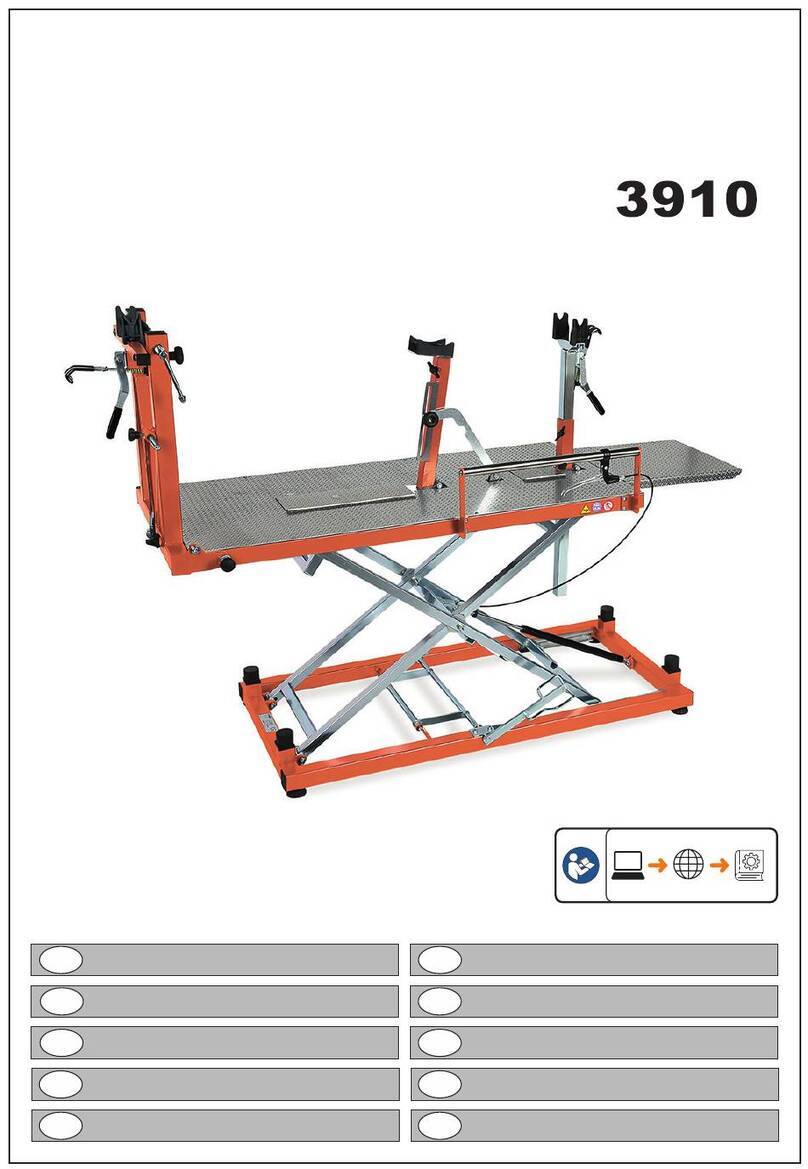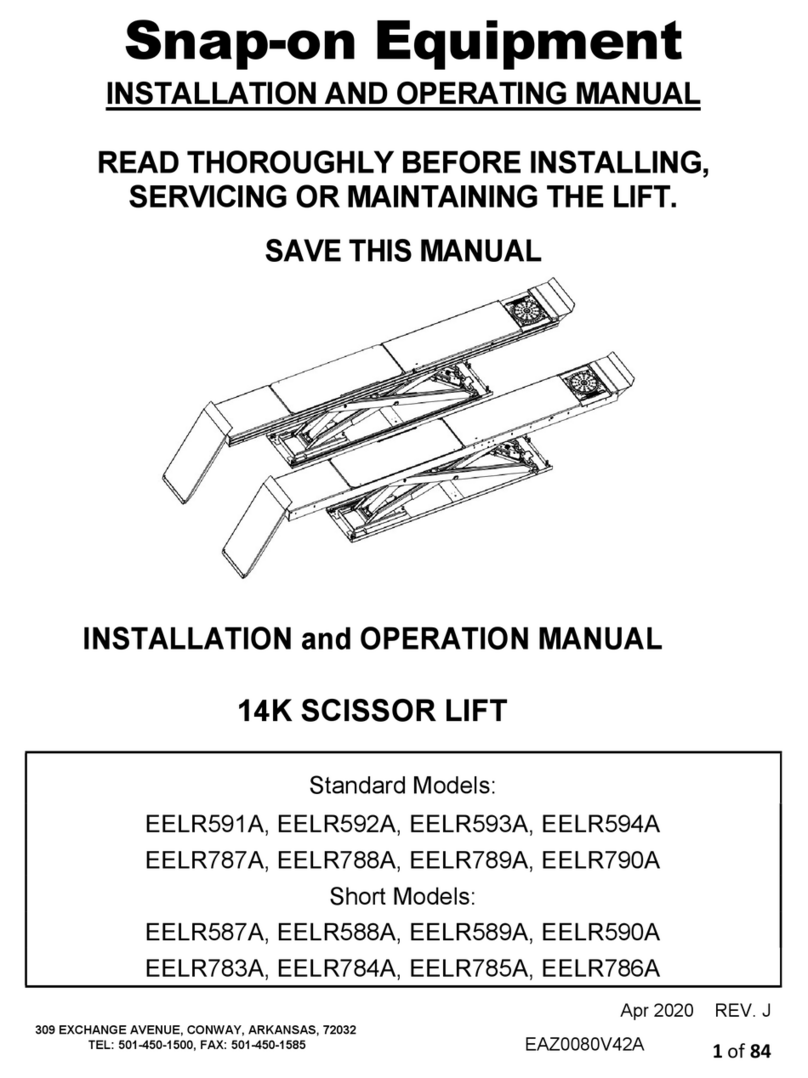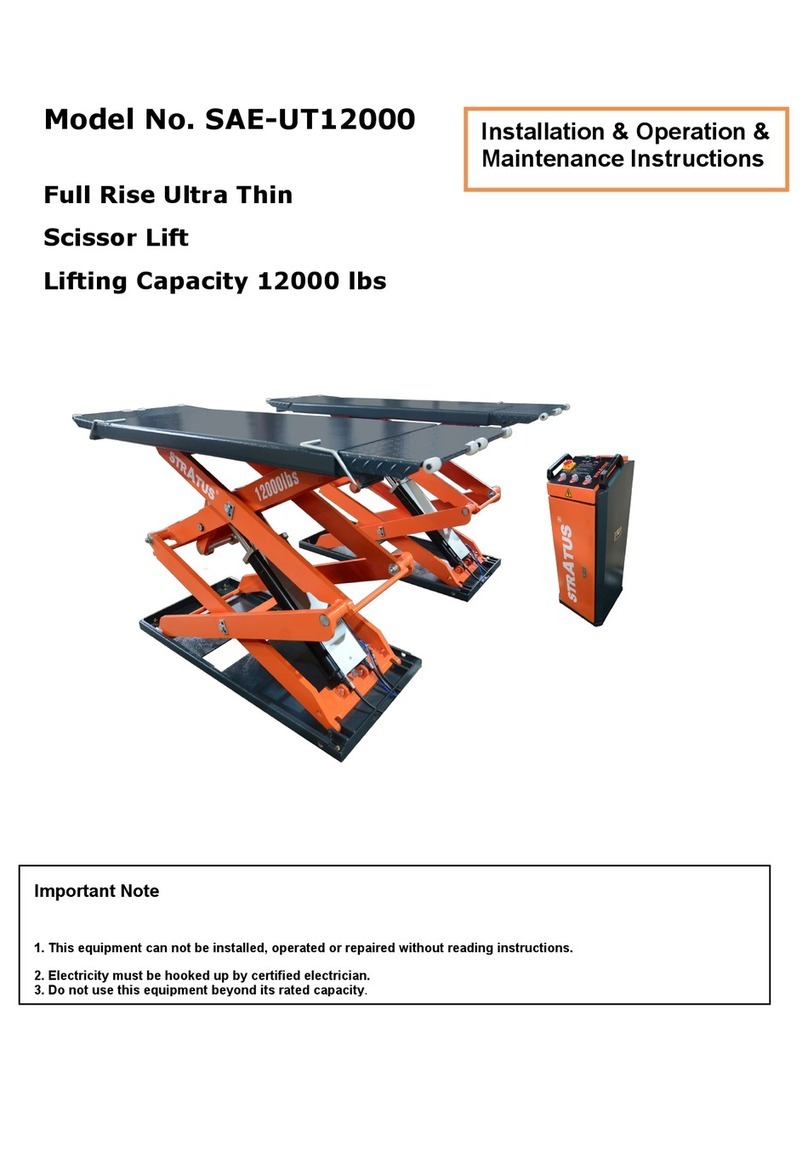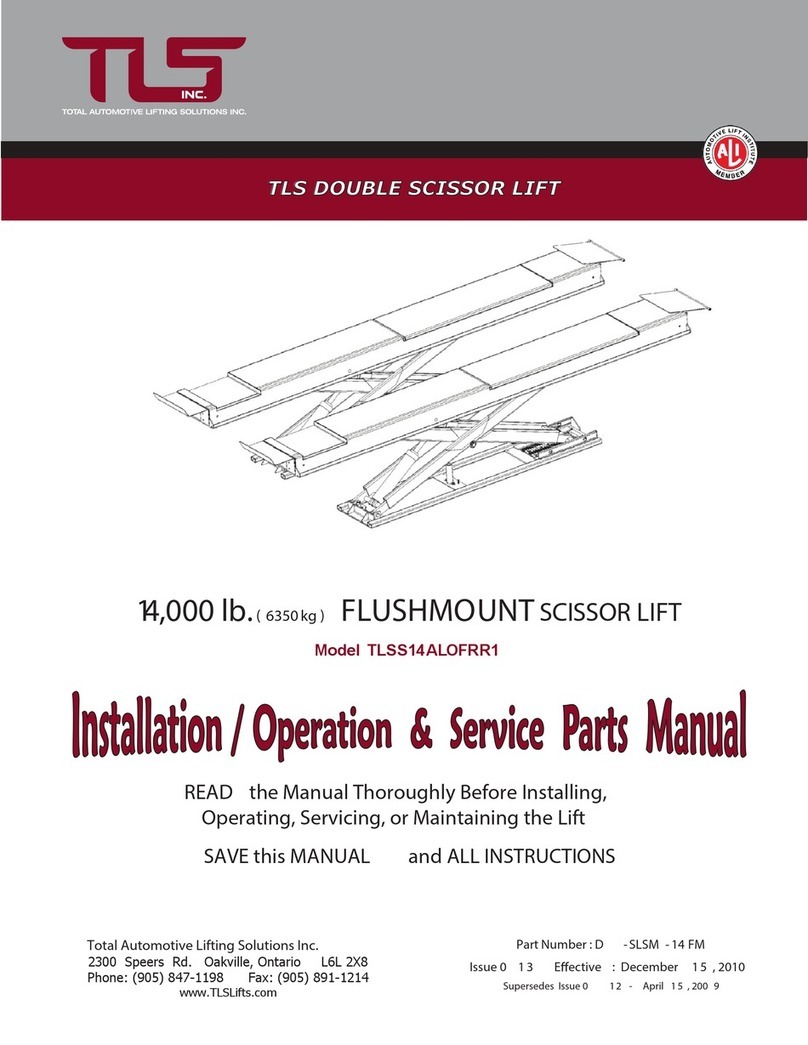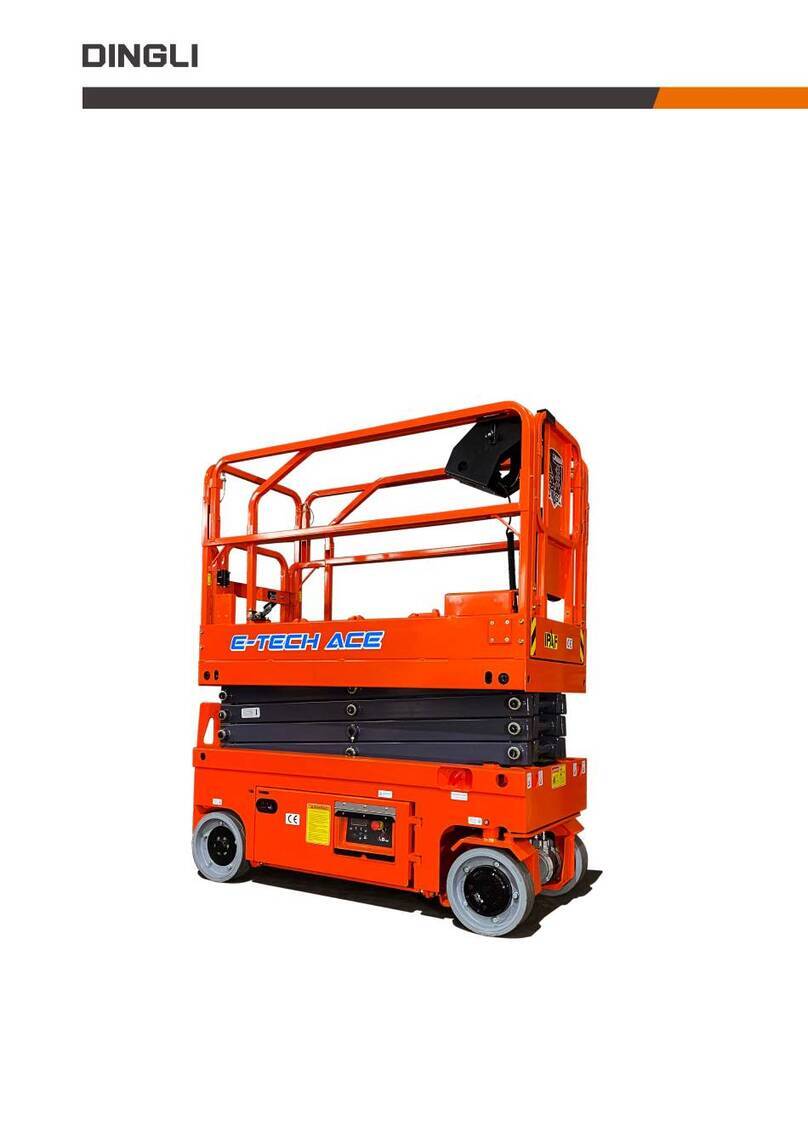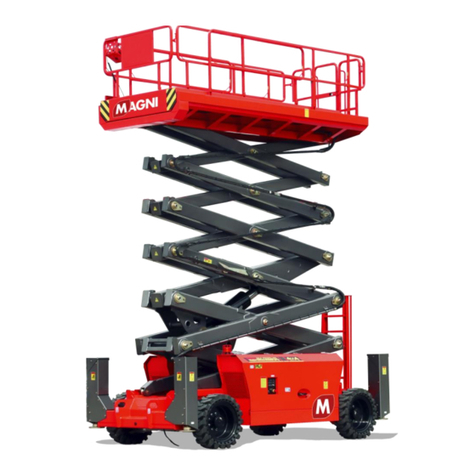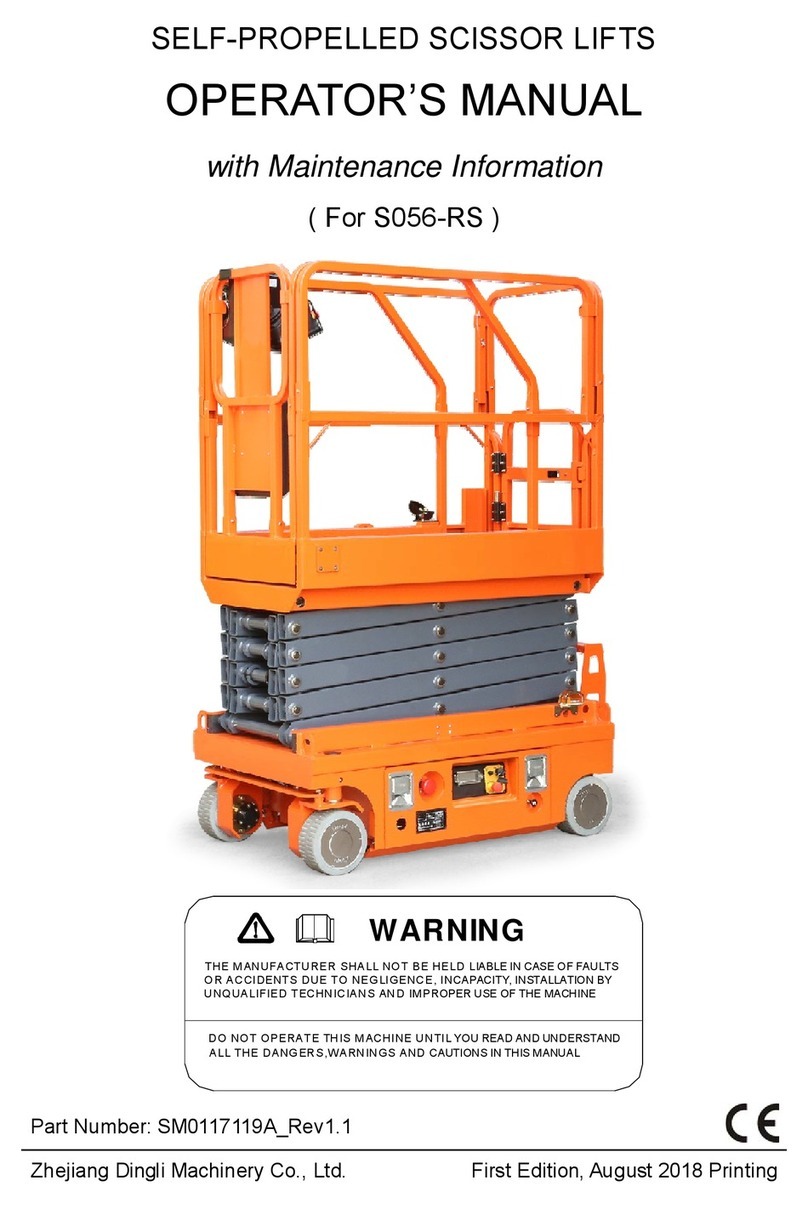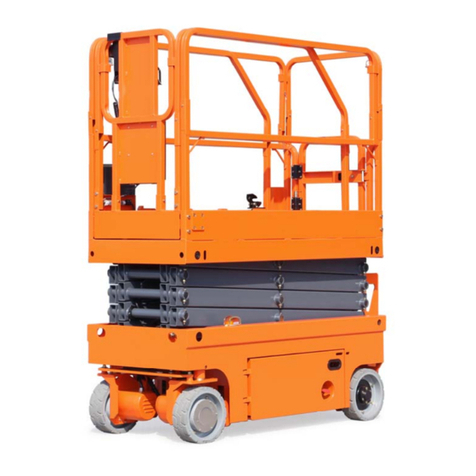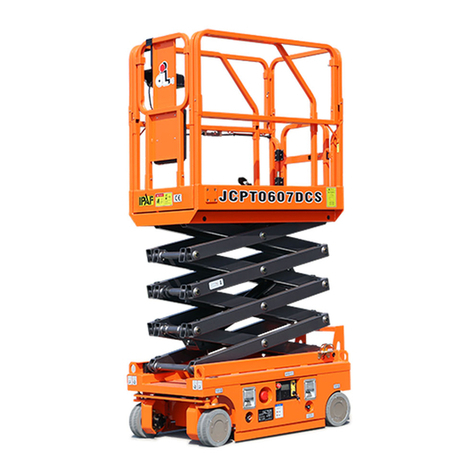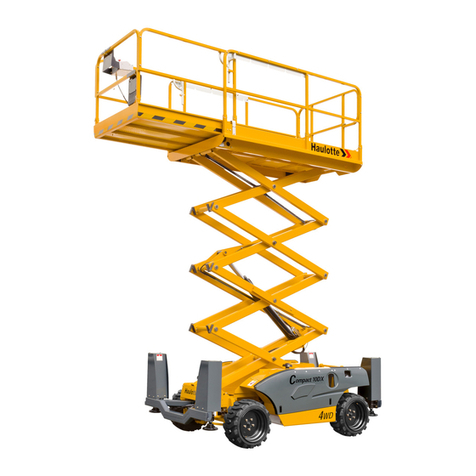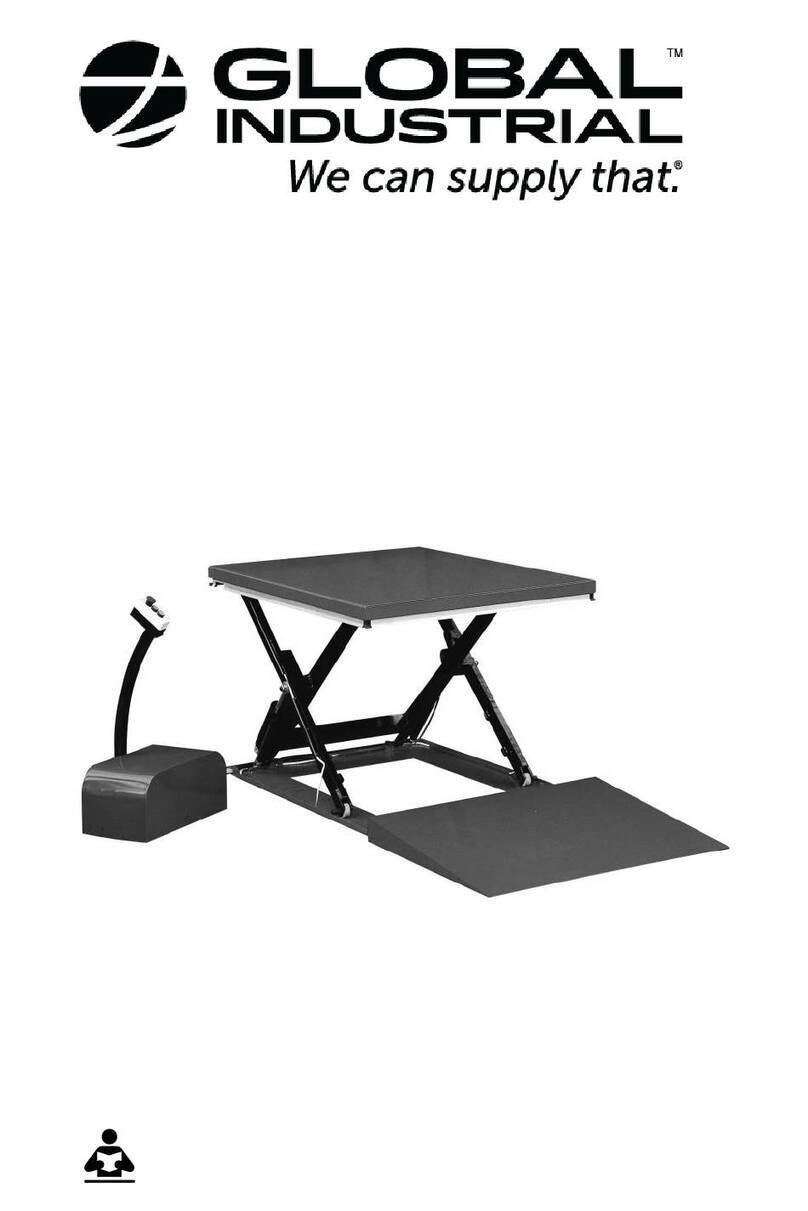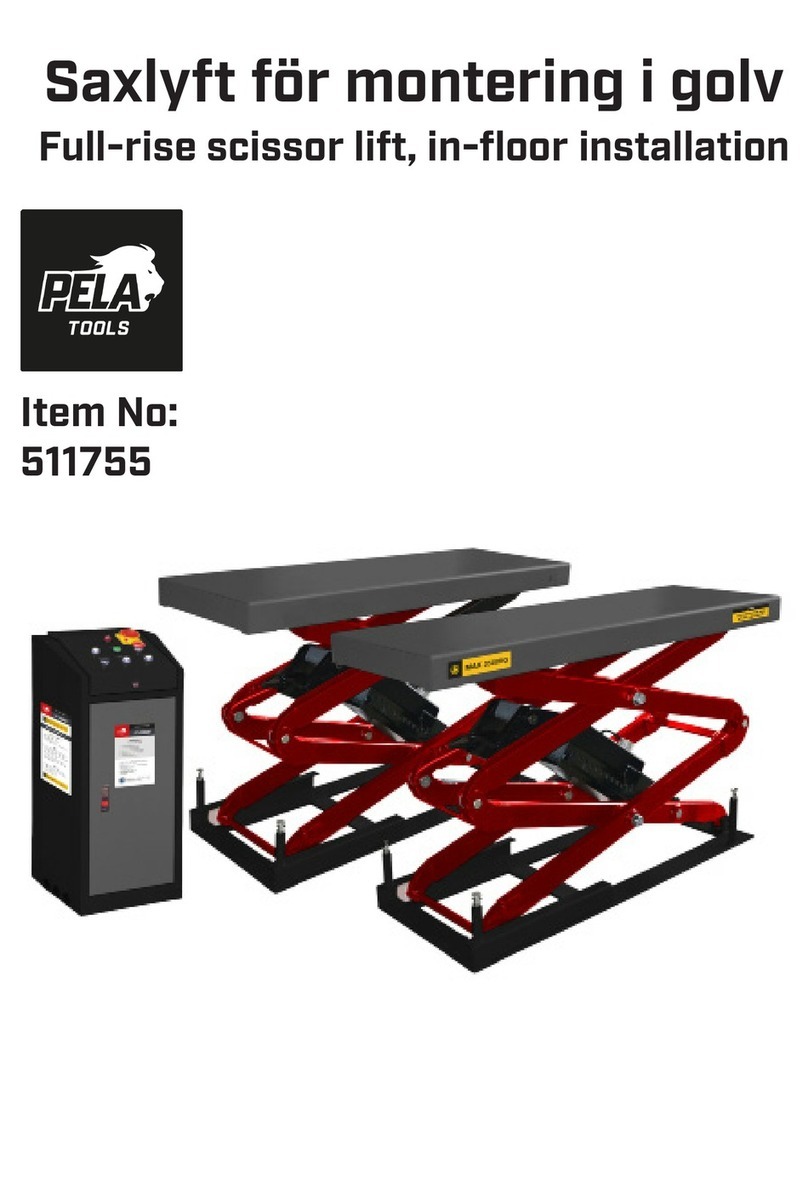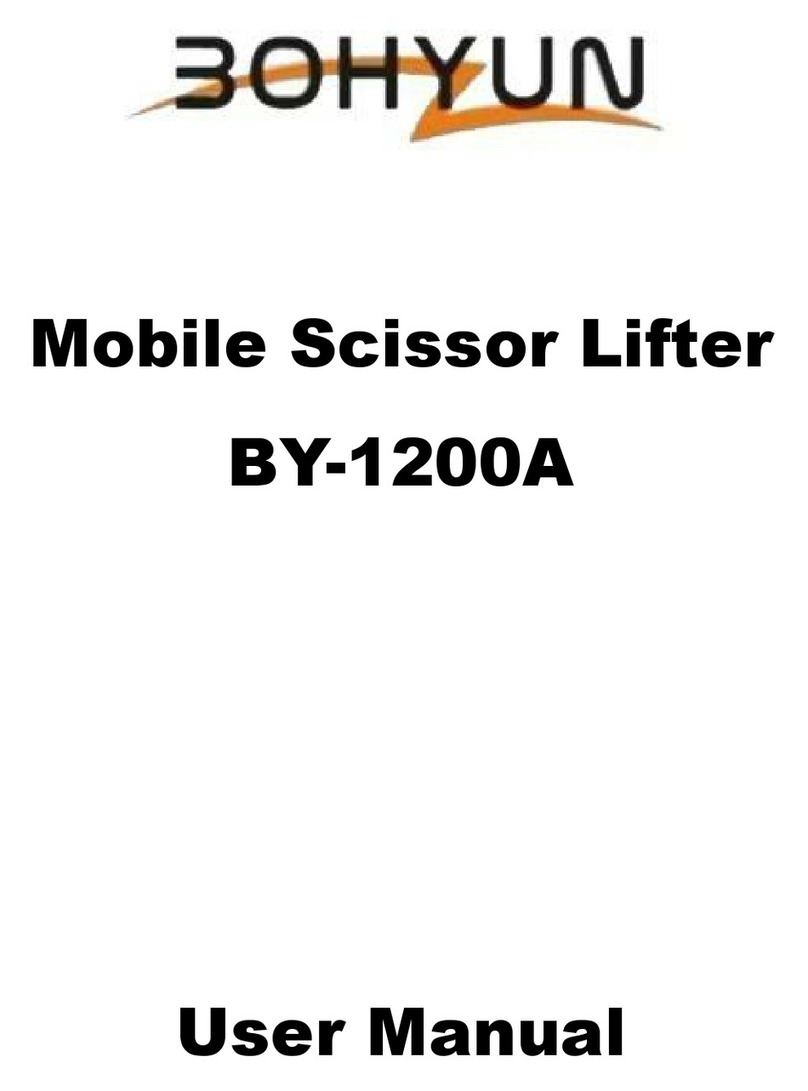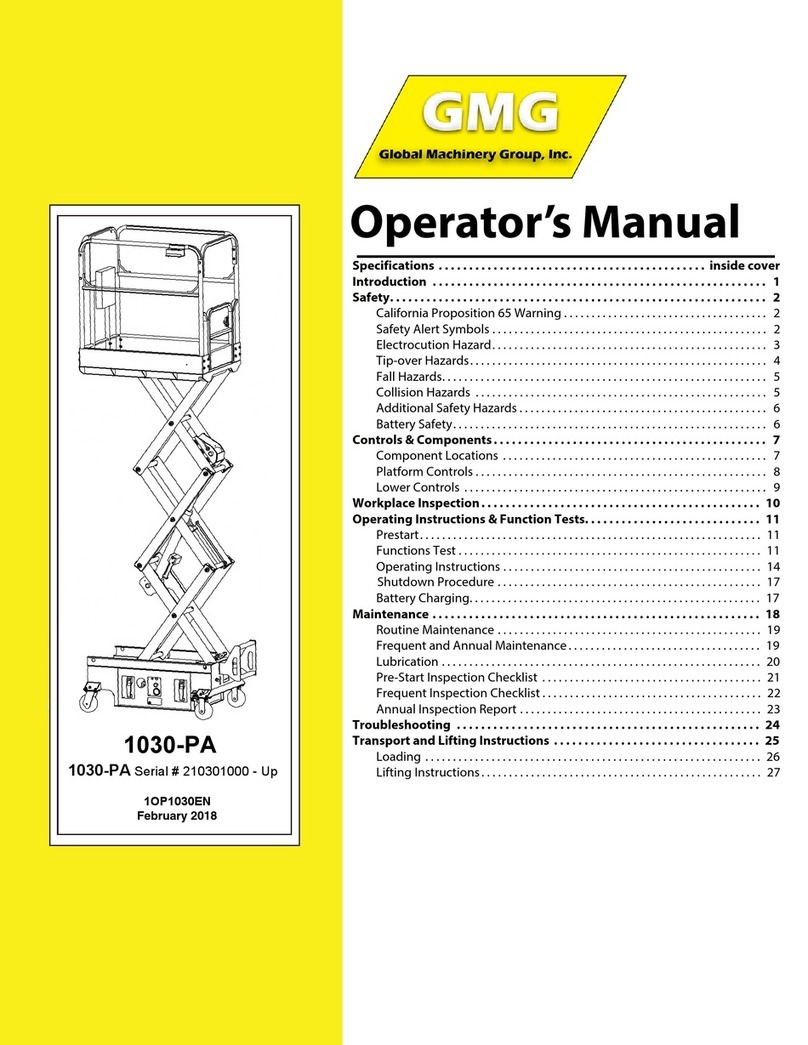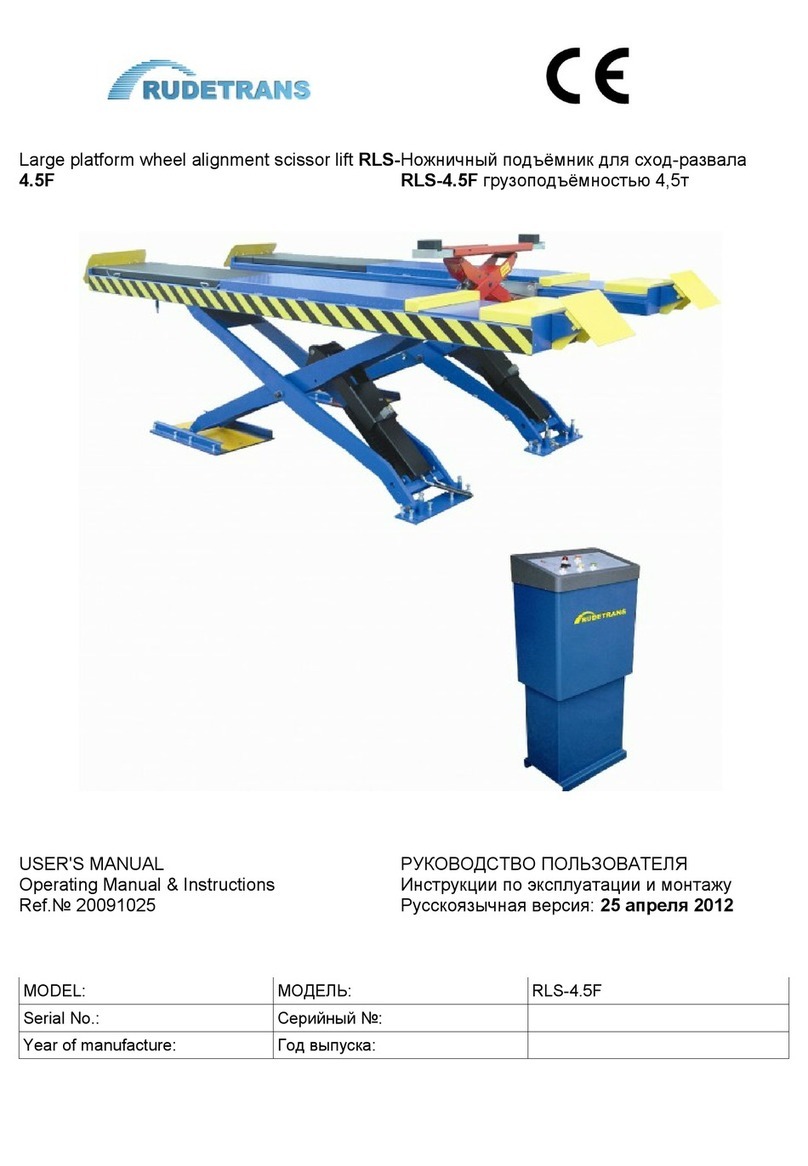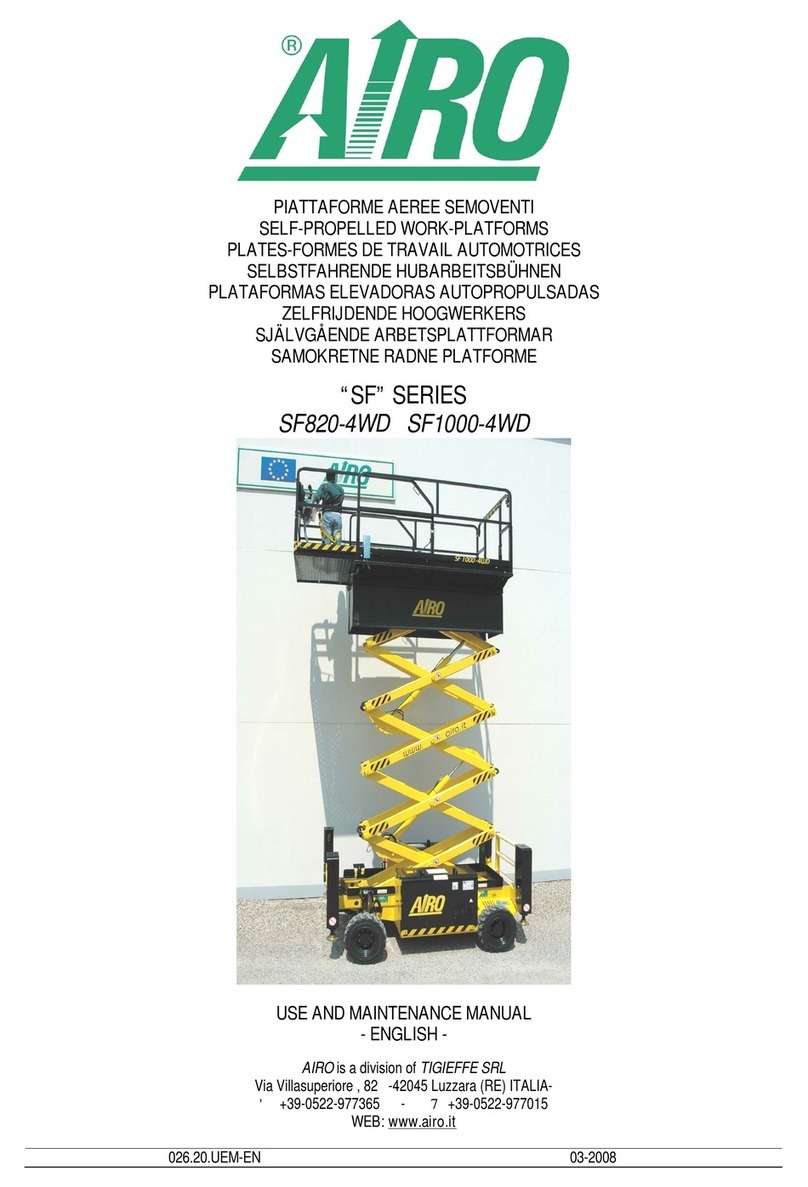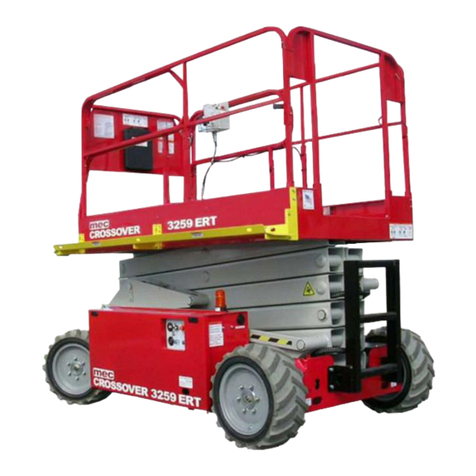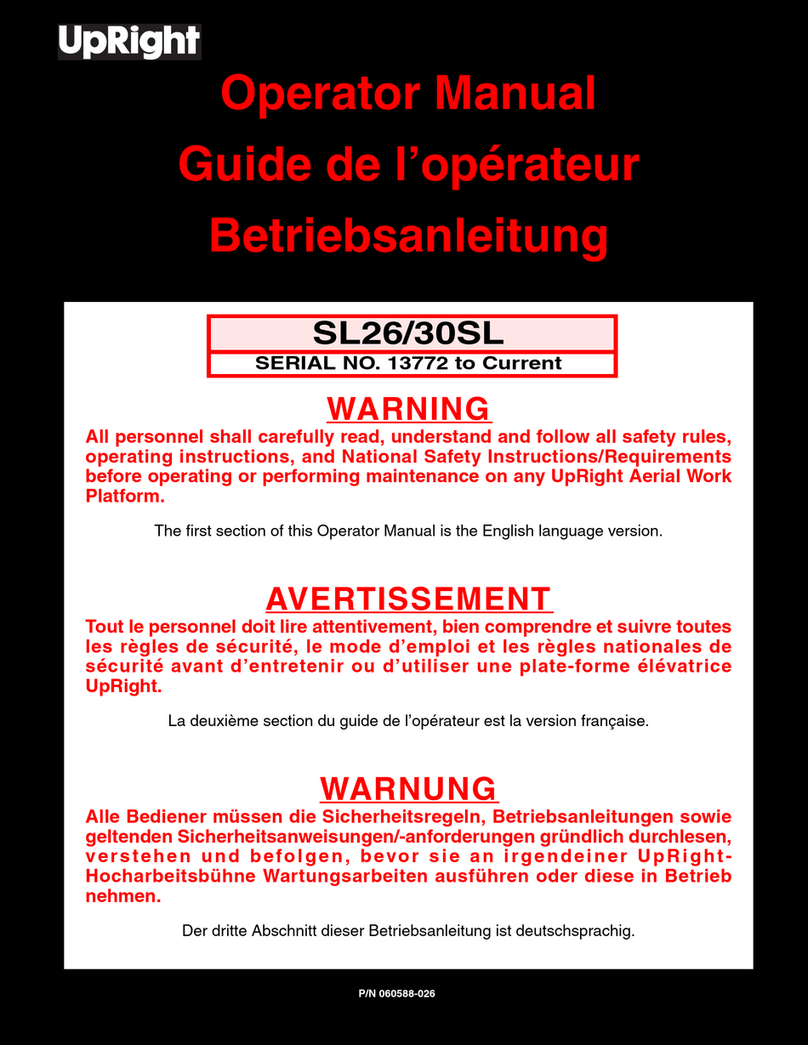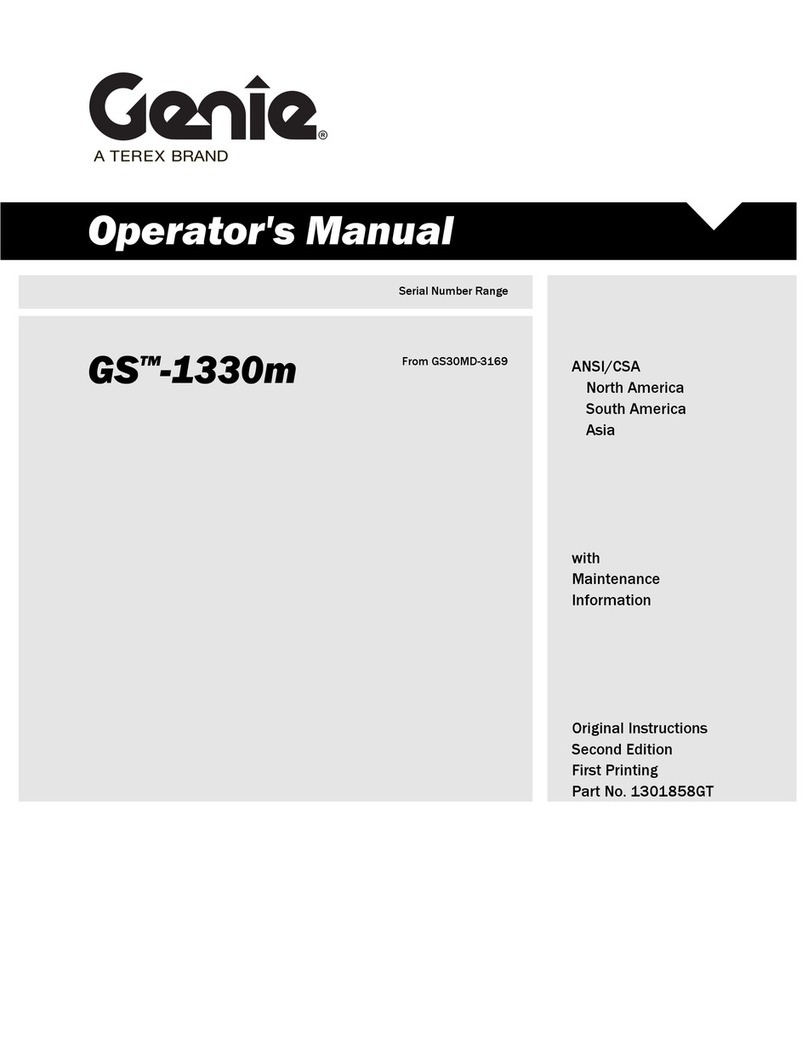
OPERATOR’S MANUAL with Maintenance Information
Safety Rules
3
Do not place or attach fixed or overhanging
loads to any part of this machine.
Do not push the machine or other objects with
the platform.
Do not operate the machine with the chassis
trays open.
Do not contact adjacent structures with the
platform.
Do not alter or disable the limit switches.
Do not push off or pull toward any object
outside of the platform.
Maximum allowable manual force 200 N
Do not tie the platform to adjacent structures.
Do not place loads outside the platform
perimeter.
Do not alter or disable machine components
that in any way affect safety and stability.
Do not replace items critical to machine
stability with items of different weight or
specification.
Do not use the machine on a moving or mobile
surface or vehicle.
Do not place ladders or scaffolds in the
platform or against any part of this machine.
Be sure all tires are in good condition.
Do not use battery that weighs less than the
original equipment. The battery is used as
counterweight and are critical to machine
stability. The battery must weigh 25 kg.
Do not modify or alter an aerial work platform
without prior written permission from the
manufacturer. Mounting attachments for
holding tools or other materials onto the
platform, toe-boards or guard rail system can
increase the weight in the platform.
Crushing Hazard
Keep hands and limbs out of scissors.
Use common sense and planning when
operating the machine with the controller from
the ground.
Fall Hazard
The guard rail system provides fall protection.
During operation, occupants in the platform
must wear a full body harness with a lanyard
attached to an authorized lanyard anchorage
point. Attach only one (1) lanyard per lanyard
anchorage point.
Do not sit, stand or climb on the platform guard
rails. Maintain a firm footing on the platform
floor at all times.
Do not climb down from the platform when
raised.
Keep the platform floor clear of debris.
Close the entry gate before operating.
Do not operate the machine unless the guard
rails are properly installed and the entry is
secured for operation.
Do not enter or exit the platform unless the
machine is in the stowed position.





















